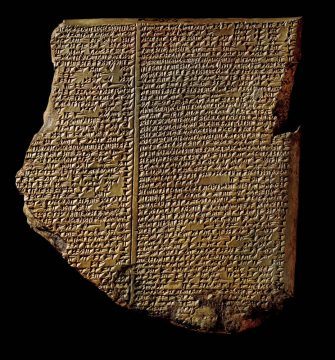Spence Lenfield in Harvard Magazine:
 THE RÉSUMÉ of Harvard’s Bernbaum professor of comparative literature might create the impression that “comp lit” means “the study of any literature from anywhere, ever.” At various points in his career, David Damrosch has written about the epic of Gilgamesh, the Hebrew Bible, the Sanskrit verse dramatist Ka-lida-sa, visions of medieval Belgian nuns, Aztec poetry, Kafka, the Chinese intellectual Hu Shih, the anthropologist Claude Lévi-Strauss’s Tristes Tropiques, and the oral autobiography of K’iche’ Guatemalan Nobel laureate and activist Rigoberta Menchú. Most scholars define themselves as specialists in one or two centuries of one or two regions; Damrosch’s work across time and space makes him an outlier. He says he tells people, “I work mostly on literature between roughly 2000 and 2015. But ‘2000’ means 2000 B.C.E.”
THE RÉSUMÉ of Harvard’s Bernbaum professor of comparative literature might create the impression that “comp lit” means “the study of any literature from anywhere, ever.” At various points in his career, David Damrosch has written about the epic of Gilgamesh, the Hebrew Bible, the Sanskrit verse dramatist Ka-lida-sa, visions of medieval Belgian nuns, Aztec poetry, Kafka, the Chinese intellectual Hu Shih, the anthropologist Claude Lévi-Strauss’s Tristes Tropiques, and the oral autobiography of K’iche’ Guatemalan Nobel laureate and activist Rigoberta Menchú. Most scholars define themselves as specialists in one or two centuries of one or two regions; Damrosch’s work across time and space makes him an outlier. He says he tells people, “I work mostly on literature between roughly 2000 and 2015. But ‘2000’ means 2000 B.C.E.”
He is best known for his advocacy of “world literature,” which he defines in his (sensibly titled) 2003 book What Is World Literature? as “all literary works that circulate beyond their culture of origin, either in translation or in their original language.” This does notmean all literature ever created: some stays within the culture and language that produced it, and never leaves. World literature happens when Russian novels remake English literature; when a Turkish writer takes inspiration from a Colombian writer; when Japanese critics review translations of Lebanese poetry. It almost always involves re-interpretation and misunderstanding: a Spanish monk sent to suppress Aztec literature ended up disseminating it instead; subsequently, Aztec hymns envision a Christian God urging revolt against the Spaniards. World literature is also nothing new under the sun: Damrosch’s first book, Narrative Covenant, is about the influence of a range of Mesopotamian literatures from the first millennium B.C.E. on the composition of much of the Bible.
More here.
